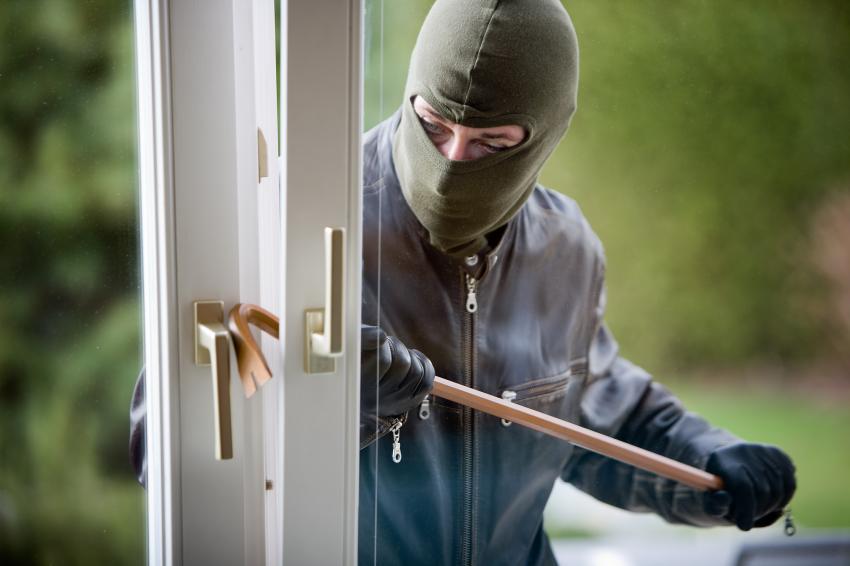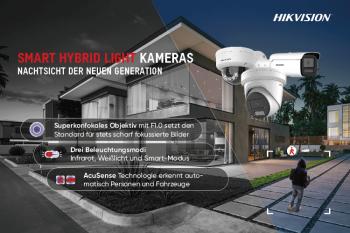Clever Ways to Add Smart Intruder Prevention Measures
GIT SECURITY Smart Home Special: Reinforce the Border
Fences, grilles and locks – mechanical barriers are the classic way to disrupt thieves’ activities. So what is ‘smart’ about them? Nowadays it’s the fact that the mechanical protection can be effectively enhanced – for example by mechatronics or infra-red. And such security features can also be incorporated into Smart Home systems.
At first glance, you can only make mistakes with a fence. High and robust? That is just a broad hint that there’s something here worth stealing. A smaller trellis fence? That just looks like a useful ladder. But ... if you do it right, a well thought-out and properly installed security fence can provide significant protection. First of all: just having to climb over a fence costs time and effort, delays progress and therefore puts many would-be burglars off right from the start. And those who are fiddling with the lock on a fence gate quickly look suspicious.
Tuned-up Fences
Depending on your budget and personal security needs, quite a few things can be done here. Security fences are mostly made of poles with spiky tops and can be up to 3.5 meters high. Most manufacturers know that a security fence is not supposed to be a ladder for robbers – that’s why it’s made so that friends of the sport of climbing just slide down and don’t get a helping leg up. And it shouldn’t offer any additional visual protection, just in case Eddie made it over to the other side. But even the most stable fences with poles made of (galvanized) iron or with a grille between the posts won’t keep every intruder out. If there’s a special security need – for example for public figures – there is the option of fitting the fence with electronics. Vibration sensors react to the noise of saws or bolt cutters. More sophisticated and simultaneously more expensive is resistance measurement: as soon as a piece of the fence is damaged, its electrical resistance is altered and this triggers the alarm. The current needed for this is extremely weak and totally harmless.
At this point we would strongly advise you against connecting a metal fence to the power socket: this security measure may appear simple, but an electrified fence can become dangerous not only to intruders: you quickly exceed punishable limits like that. If you still have too much electricity left over, you’d better invest it in high-power spotlights: on stable poles, four meters up, so they can’t be easily vandalized. Dubious characters are known to avoid brightly lit places. So, taking a look at the situation, perhaps you’ll notice the large rubbish container standing next to the wall of the house – a really great help in reaching the higher floors: it’s got to go. Smart Home enthusiasts will be keen to enhance the visible fence with an invisible one: it consists of infra-red light that is beamed between the fence posts. Any interruption between transmitter and receiver is noticed and evaluated. Such a system knows the subtle differences between lingering intruders and hungry squirrels – only the former will set off the alarm. It can only be bridged with a lot of effort and is therefore extremely effective. Such a system can also be integrated into the home security system.
Grilles at Ground Level and for Basements
Grilles for windows on the ground floor and for basements are not there just to look pretty. They should be made of steel – iron is easier to work, but also easier to cut through. And another important thing: the screws and bolts must not be accessible from outside – the grilles are fitted best of all while the house is being built and anchored into the walls. That can of course be done later, but it can be very costly. The wall must also not be too old and crumbly. When fitting such grilles on more modern houses, you often come across a few centimeters of insulation before reaching solid brickwork – some spacers may be necessary here. But before you barricade yourself in, you should also give some thought to escape and rescue routes. Intruders may well be kept outside by window grilles, but in an emergency inhabitants may not be able to get out – this may become critical in the case of fire or flooding. A grille that can only be quickly released from within could be the answer here.
Door Locks
The locksmith will happily come along if you’ve locked yourself out – that costs dearly and is usually very quick, but could take a half hour or so. The lock is usually kaputt afterwards and must be replaced. It can be just as expensive when the police arrive with a search warrant. But what the police and locksmith can do, thieves have long been able to do just as well. Luckily the security industry has found ever better methods to protect locks. But many house doors are still only equipped with a single lock. One hefty shove from outside can be enough to render it useless. Additional locks or bolts, or a locking bar with its brackets set into the wall are the countermeasures most often chosen. But it must be noted that the best lock mechanism is only as good as its installation. Manufacturers such as Abus, Winkhaus, Evva and others therefore have complete solutions in the product range that include the lock, keys and mounting hardware with instructions on effective installation. Balcony doors are inviting and much loved in the burglar community as a method of entry. A so-called locking bar or an angled protection bar can offer the standard lock some support and significantly improve security against cranking the door open with a crowbar.
A Tipped Window is Practically Open
Apart from the doors, intruders also have a keen interest in the windows. The often-heard description of “intruder-proof“ used for tilt and swing windows stands in stark opposition to the opinion of burglars that every tilted window is an open window. The mechanics of older and cheaper models is quick to overcome – so never leave a window at ground level tipped if you’re not at home. Modern window technology can impede burglars in their attempts – we’re talking about a few minutes here – and are then considered “intruder-resistant“. Window catches with a built-in battery-driven alarm are also available now – some also interact meanwhile with Smart Home security systems.
The double or triple glazing of modern windows provides a further hurdle. But a burglar may try anyway to drill through them in order to reach the handle inside. So you should be one step ahead by fitting locking window handles. And – hard to believe but true – some dreamy home owners then lay the key within easy reach on the window sill. That naturally defeats the intention of the inventor. For less than the price of a tank of fuel, you can buy simple window security elements made of sheet metal. These are screwed to the window and the frame – it may be necessary to drill some holes – it is recommendable for renters to discuss this with their landlord before starting. The result of this work is very simple and effective leverage protection, without affecting usage from within the building.
Mechatronics for Door and Window
Micro-switches have been around for a long time that are built into door and window handles, are connected to the alarm system and report any movement of the lock mechanism. Door and window mechanisms are becoming increasingly intelligent through the incorporation of electronics: they enable locks and handles to communicate with the house alarm system. That happens wirelessly. The main advantage is that no more wires must be run to every door and window. Additionally, the sensors already raise the alarm at the first attempt to break in, long before the door or window is wide open. Abus, for example, also supplies mechatronic locks and handles color-matched to door and window frames.
Join the Resistance
The EU has provided uniform standards for burglar protection. On a scale from 1 to 6, doors and windows are classified according to EN 1627 by the resistance that they offer casual thieves or alternatively an experienced and well-equipped burglar. That is the so-called Resistance Class, in short “RC“. In private homes, the doors and windows are usually in the range RC 1 to 3. An RC3 security can delay a typical criminal by up to five minutes. A house is already well served by RC2 as windows to this specification are fitted with laminated glass or protective foil, the doors with a corresponding intrusion-resistant construction and will thwart the thief by at least three minutes.
The Weakest Link is Critical
An important rule when installing mechanical security measures is not to view weak points in isolation. If you’ve improved the handles, the weak point moves elsewhere, for example to the hinges. You have to analyze every individual weak point in the home. Then you can see what’s necessary and purchase the appropriate hardware. Mechanical security measures are definitely a temporary obstruction to burglars – many walk away when they see them. In conjunction with the other technical options that we are presenting here, you can rightfully feel quite safe.












